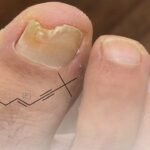Trigeminal neuralgia (TN) is a condition that causes sudden, severe facial pain and can greatly affect daily life.
The main cause is often the compression of the trigeminal nerve by a blood vessel, which damages the myelin sheath around the nerve and leads to intense pain.
Other causes include multiple sclerosis, which also damages the myelin sheath, and, less commonly, tumors. Facial trauma or surgical injuries can also cause TN.
In some cases, there is no clear cause, making diagnosis and treatment more challenging.
Professional medical evaluation is essential to identify the underlying issue.
1. Blood Vessel Compression

One major cause of trigeminal neuralgia is the compression of the trigeminal nerve by a blood vessel, typically an artery or vein.
This pressure irritates the nerve and leads to severe pain. The compression damages the myelin sheath, the nerve’s protective covering, causing improper nerve function and intense pain episodes.
This condition is more common in older adults, as aging can cause blood vessels to elongate and droop, increasing the likelihood of nerve compression. Imaging techniques like MRI can help diagnose these compressions.
Treatment options include microvascular decompression surgery, which relieves pressure on the nerve by repositioning or removing the blood vessel.
2. Nerve Damage from Surgery or Injury
Nerve damage from surgical procedures or traumatic injuries can also trigger trigeminal neuralgia.
Operations involving the head, face, or mouth may accidentally harm the trigeminal nerve, causing painful symptoms.
Facial trauma or even dental work can also be triggers for this condition.
Such nerve damage disrupts normal pain signals, leading to intense pain episodes.
Recovery from surgically-induced nerve damage varies, with some patients experiencing ongoing symptoms.
Management options include medication, nerve blocks, and, in some cases, surgery to repair the nerve or relieve pain.
3. Multiple Sclerosis
Multiple sclerosis (MS) is a chronic disease that deteriorates the myelin sheath covering nerve fibers. This damage disrupts nerve impulses and can lead to painful episodes characteristic of trigeminal neuralgia.
In MS patients, the trigeminal nerve can become demyelinated, causing unpredictable, sharp pain. These demyelinating lesions often occur in the root entry zone, a common site for such damage.
In MS, TN occurs frequently and precedes the diagnosis of MS in 15.0% of individuals. Given the frequency of TN in MS, further epidemiological studies and clinical trials to identify effective pharmacologic and nonpharmacologic therapies for TN in MS are warranted. Ahmad Fallata
Treatment for trigeminal neuralgia associated with MS typically involves medications like antiepileptic drugs. Surgical options, though less common, may be considered for severe cases unresponsive to medication.
4. Tumors
These tumors can be benign, like meningiomas, or malignant, such as schwannomas. The location and size of the tumor are key factors in the severity of the pain.
Patients with trigeminal neuralgia caused by tumors may experience persistent facial pain, which is sometimes mistaken for dental or sinus issues.
Diagnostic imaging, such as MRI, is essential for identifying these tumors.
Treatment often involves surgical resection of the tumor to relieve nerve pressure. In some cases, radiation therapy may be used to shrink the tumor and alleviate symptoms.
5. Tooth Extraction

6. Periodontal Disease
This condition involves inflammation and infection of the gums, often leading to severe oral discomfort. The inflammation can exacerbate trigeminal nerve sensitivity, causing episodes of sharp, jabbing pain.
Advanced periodontal disease may result in significant damage to the teeth’s supportive structures.
The ongoing inflammation and infection can keep the trigeminal nerve in a heightened state of irritation.
Regular dental check-ups and good oral hygiene are essential to prevent periodontal disease.
7. Herpes Simplex Virus

8. Lyme Disease
Lyme Disease, caused by the bacterium Borrelia burgdorferi and transmitted through tick bites, can lead to neurological complications, including trigeminal neuralgia if untreated according to a study from NCBI.
The bacteria can invade the nervous system, causing inflammation and damage to the cranial nerves.
Symptoms might not appear immediately after infection, making diagnosis challenging.
Once identified, Lyme Disease can be treated with antibiotics, which may reduce neuralgia symptoms.
9. Genetic Predisposition

Trigeminal neuralgia (TN) manifests with intense facial pain and may be influenced by genetic factors. Research highlights the potential role of hereditary components in some cases.
A systematic review, found here, examined the prevalence of familial trigeminal neuralgia. The review explored whether specific genes are involved in human TN studies and animal models of trigeminal pain.
Findings suggest that certain gene mutations might increase susceptibility. Studies identified several genes linked to pain transmission and nerve dysfunction in trigeminal neuralgia patients, showing a possible familial inheritance pattern.
Current investigations continue to focus on discovering the exact genetic markers and pathways. Recent research discussed in another review described primary research articles discussing genetic predictors of trigeminal neuralgia and neuropathic pain.
Understanding genetic predisposition can help in predicting risk and developing personalized treatment plans. Future studies aim to further clarify the genetic connections and provide insights for targeted therapies.
By leveraging genetic information, clinicians hope to improve both diagnosis and treatment, potentially offering more effective management strategies for individuals with a family history of trigeminal neuralgia.







